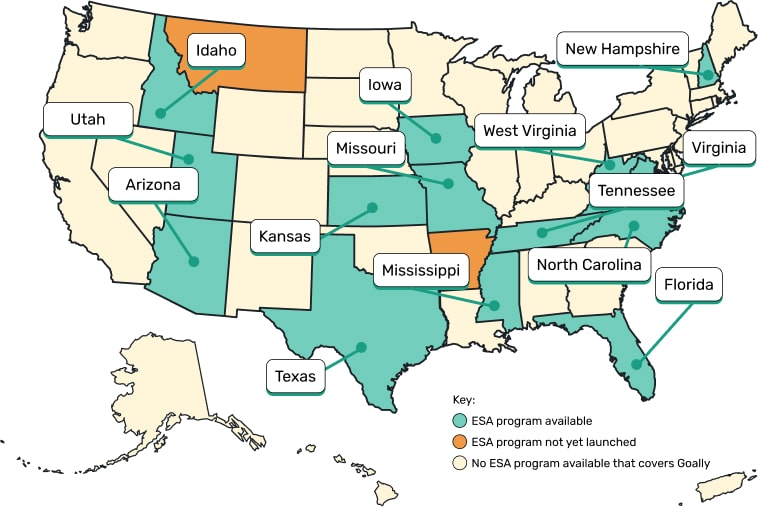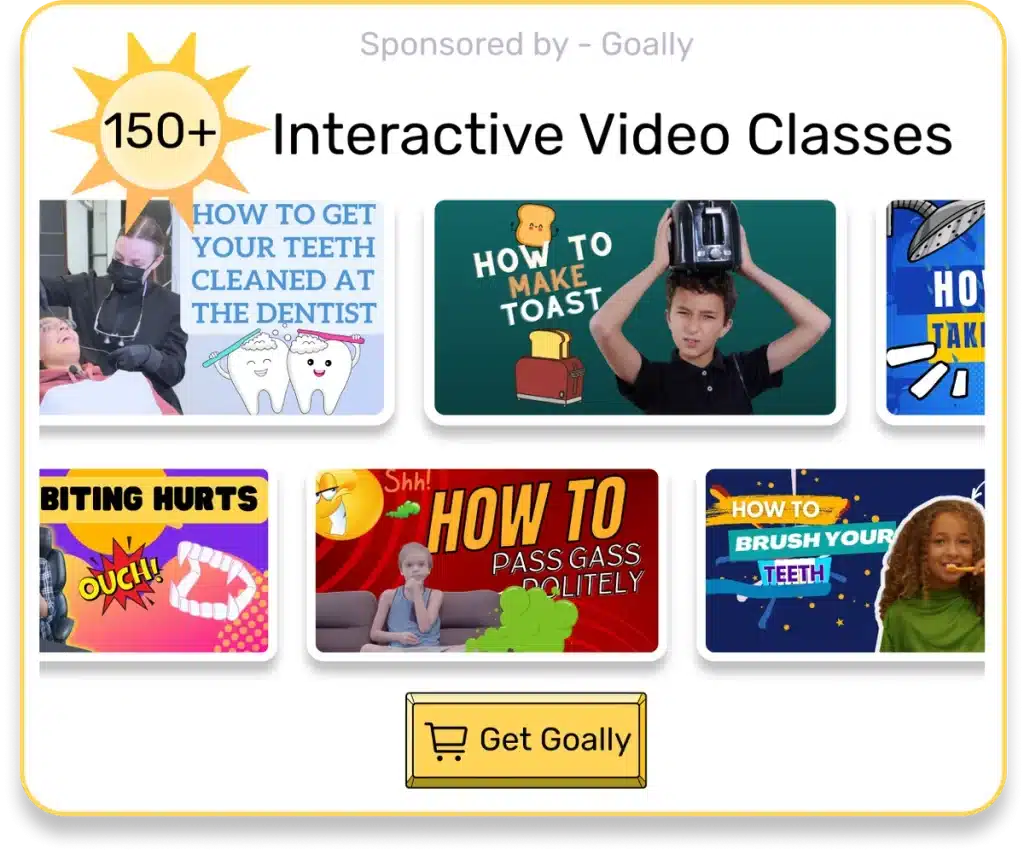Education Savings Accounts (ESAs) are a type of school choice program that provides parents with state-funded accounts to pay for educational expenses, such as private school tuition, tutoring, and special education services. ESAs (sometimes called “school choice programs”) are still a relatively new type of program, and there are significant differences in the design and implementation of ESAs across the United States.
Table of Contents

How ESA Programs Differ From One Another
ESA programs differ from one another in several ways, including:
- Eligibility: As mentioned above, eligibility requirements for ESA programs (sometimes called “school choice programs”) vary from state to state. Some states have income limits, residency requirements, or special education needs requirements.
- Funding: The amount of funding students receive through ESA programs also varies widely from state to state. In some states, students receive 90% of the state’s base per-pupil funding, while in others, students receive only 65%.
- Expenditures: ESA funds can be used to pay for a wide range of educational expenses, but there are some restrictions on how the funds can be used. For example, some states prohibit using ESA funds for religious instruction or transportation.
- Accountability: ESA programs typically have some form of accountability measures in place to ensure that students are making progress academically. These measures may include standardized testing, portfolio reviews, or parental feedback. However, the specific accountability measures vary from state to state.
List of ESA Programs by State
| State | ESA Program Government Website | Normal Person Explanation |
|---|---|---|
| Arizona | Empowerment Scholarship Accounts | Link |
| Arkansas | Arkansas Children’s Educational Freedom Account Program | Link |
| Florida | Family Empowerment Scholarship for Educational Options Program | Link |
| Florida | Family Empowerment Scholarship for Students with Unique Abilities (ESA) | Link |
| Indiana | Education Scholarship Account Program | [coming soon] |
| Iowa | Education Savings Account Program | Link |
| Mississippi | Equal Opportunity for Students with Special Needs Program | [coming soon] |
| Montana | Montana Special Needs Equal Opportunity Education Savings Account Program | Link |
| New Hampshire | Education Freedom Account Program | Link |
| North Carolina | Education Student Accounts (ESA+) | Link |
| South Carolina | South Carolina Education Scholarship Trust Fund Program | Link |
| Tennessee | Education Savings Account Pilot Program | Link |
| Utah | Utah Fits All Scholarship Program | Link |
| Virginia | Parental Choice Education Savings Accounts | Link |
| West Virginia | Hope Scholarship Program | Link |
| Wisconsin | Wisconsin TEPP | Link |

Nuances of ESA Programs Around the United States
Some of the critical nuances of ESA programs include:
- Eligibility: Most ESA programs are open to all students, but some states have restrictions on eligibility, such as income limits, residency requirements, or special education needs.
- Funding: The amount of funding that students receive through ESA programs varies widely from state to state. For example, in Arizona, students receive 90% of the state’s base per-pupil funding, while in Mississippi, only 65%.
- Expenditures: ESA funds can be used to pay for a wide range of educational expenses, but there are some restrictions on how the funds can be used. For example, some states prohibit using ESA funds for religious instruction or transportation.
- Accountability: Education Savings Account programs typically have some form of accountability measures in place to ensure that students are making progress academically. These measures may include standardized testing, portfolio reviews, or parental feedback.

Read more: Does My Child Qualify for Medicaid?
How Vendors Should be Prepared to Interact Differently With Each ESA Program
Vendors who work with ESA programs should be prepared to interact with each program differently. This is because each program has its own unique design and implementation features. For example, some states may have different requirements for using ESA funds. In contrast, other states may have different accountability measures in place.
Here are some tips for vendors who are working with ESA programs:
- Please do your research: Before you start working with an ESA program, it is essential to do your research and understand the program’s specific features. This includes understanding the eligibility requirements, funding amounts, expenditure restrictions, and accountability measures.
- Be flexible: Be able to change your approach with each ESA program that you work with. Different programs may have different requirements and expectations.
- Be responsive: Be responsive to the needs of the ESA program and its participants. This means being able to answer questions promptly and provide support when needed.
- Be transparent: Be transparent about your fees and services. Ensure that ESA program participants understand what they are paying for and what services they will receive.
By following these tips, vendors can successfully work with ESA programs and help students to receive the best possible education.
Use Your ESA Funds to Purchase a Goally Tablet
Goally tablets are specifically for kids. They are durable and have a variety of features that make them ideal for educational use. For example, Goally tablets have a kid-friendly interface, parental controls, and a variety of educational apps.
States Where You Can Buy Goally with ESA Funds:
To learn how to purchase Goally with your ESA funds, click on your state below for step-by-step instructions.
- Arizona
- Florida
- Iowa
- Missouri
- New Hampshire
- Virginia
- West Virginia
- Idaho
- Wisconsin
- Kansas
- Texas
- Utah
- South Carolina
States Considering Goally as an Approved Vendor:
Reach out to your state’s program to request us as a vendor to help us get approval faster!
Families who are want to use their ESA funds to purchase a Goally tablet should contact their ESA provider to learn more.

Goally | Best Videos to Teach Life Skills
Give your kid an independent future. Goally has 100+ video classes teaching life skills like “How to Choose a Restaurant,” “How to Interrupt Politely,” and “How to Get Ready for School.”
Goally takes kids on an adventure that includes interactive practice and checkpoints along the way! No web browsers, YouTube, or social media.
The combination of ESAs and Goally showcases a multi-faceted approach to education, emphasizing empowerment, choice, and support. ESAs grant parents the autonomy to make educational decisions. At the same time, Goally aids students with special needs navigate their educational journey. The collaboration of financial flexibility and technological support demonstrates the educational sector’s commitment to addressing diverse needs and ensuring equitable access to quality education.
FAQ’s About ESA Programs
What is an ESA program? An ESA program, or Education Savings Account program, allows parents to set aside funds for educational expenses, providing flexibility in choosing learning options. Which states have State-funded Education Savings Accounts (ESAs)? There are currently 15 states that have active or soon-to-launch ESA programs available: Arizona, Florida, Iowa, New Hampshire, Virginia, Missouri, North Carolina, West Virginia, Wisconsin, Arkansas, South Carolina, Utah, Montana, Mississippi, and Tennessee How do I buy Goally with my ESA funds? It depends on your state! Click on your state in our list at the top of this post, and we'll walk you through every step. How can I qualify for an ESA program? Eligibility criteria vary by state, but typically, parents of K-12 students can apply for an ESA if their child meets certain conditions, such as having a disability or attending a low-performing school. What can Education Savings Account funds be used for? ESA funds can cover various educational expenses, including private school tuition, tutoring, therapy, textbooks, and even specialized learning tools like visual schedules and emotional regulation apps. Are ESA funds subject to taxes? Generally, ESA withdrawals for qualified educational expenses are tax-free, making ESAs an attractive option for parents looking to save on education costs. How can I combine an ESA program with tools like visual schedules and rewards for my child's education? You can use ESA funds to invest in educational tools like visual schedules, emotional regulation apps, and rewards systems to support your child's learning and development. These tools can enhance their educational experience and help them thrive. What’s the difference between a “state-funded” & Coverdell ESA? Coverdell ESAs are savings accounts funded by families themselves and are usually put towards college. In contrast, ESAs like the ones that cover Goally as an education expense are funded by the state. Families apply and receive grant money to put toward learning materials for K-12 education. Is this ESA the same things as a 529 plan? State-funded ESAs (like the ones we explain above!) offer state-funded tuition assistance for specific needs within a state. 529 plans are tax-advantaged savings accounts for a wider range of education expenses nationwide and are not state-funded.

Goally
We help parents teach their kids life skills, like doing bedtime and morning independently. Backed by science, we incorporate evidence-based practices and expert-informed designs in all of our apps and content.





